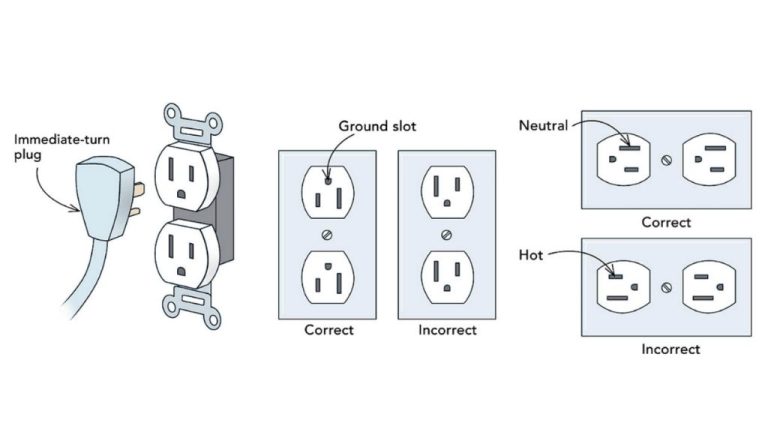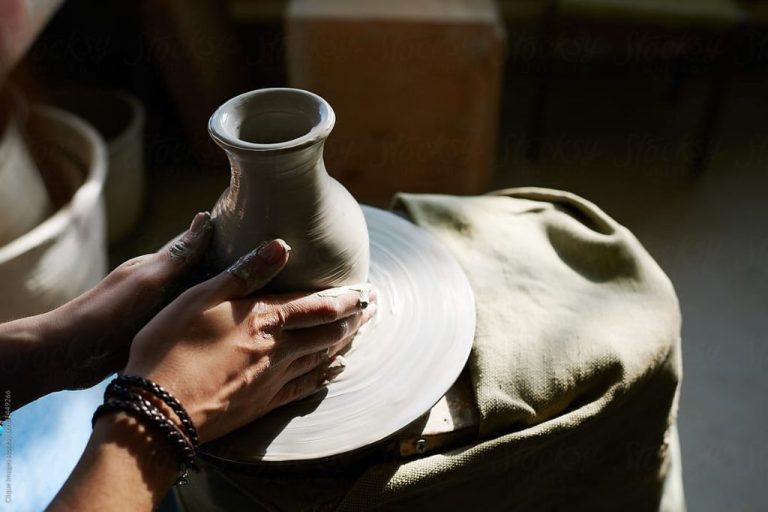What Is Terracotta Fountain?
What is Terracotta?
Terracotta is an ancient ceramic material that has been used for architectural and decorative purposes for thousands of years. The word “terracotta” comes from the Italian words “terra” meaning earth and “cotta” meaning cooked. True terracotta is a type of earthenware made from clay that has been fired at high temperatures.
The origins of terracotta date back over 30,000 years to early human civilizations in regions such as China, Mesopotamia, and South America. Prehistoric cultures discovered that shaping and firing clay produced durable vessels, figurines, and building materials. Over the centuries, artisans perfected techniques for creating intricate terracotta detailing on architecture.
Terracotta is made from natural clay which gives it a distinctive reddish-orange color. It can also be glazed or painted in other colors. The properties of terracotta make it weather resistant, breathable, and excellent for heat retention. Historically, it has been used for pottery, sculpture, roof shingles, bricks, and other building elements. Terracotta maintains its structural integrity and earthy beauty over time, making it a cherished material in art and architecture.
Types of Terracotta Fountains
Terracotta fountains come in a variety of styles to suit different spaces and needs. Some of the most popular types of terracotta fountains include:
Floor Fountains
Floor fountains, as the name suggests, sit directly on the floor. They come in a range of sizes from small, decorative fountains to large, elaborate multi-tiered fountains. Floor fountains with wide bases provide stability and often include built-in water reservoirs. They make striking centerpieces in entryways, living rooms, and other open floor spaces.
Wall Fountains
Wall fountains are mounted on a wall and spill water down the front surface. They come in rectangular or semi-circular shapes. Wall fountains are designed not to take up floor space and can help highlight and accentuate a blank wall space. They are commonly seen indoors but also work well on outdoor walls and fences.
Tabletop Fountains
Tabletop fountains, small fountains designed to sit on a desk or table, are an easy way to add water features inside the home or office. Their compact size makes them highly versatile and they operate very quietly. Tabletop fountains come in basic rectangle shapes but also more ornate designs.
Outdoor Garden Fountains
Outdoor garden fountains are designed to withstand the elements while adding visual interest and serene sounds to gardens, patios, courtyards, pool areas, and other outdoor living spaces. Options include pedestal fountains, tiered fountains, wall-mounted fountains, and fountains incorporated into pondless waterfalls and landscape features.
Benefits of Terracotta Fountains
Terracotta fountains provide a number of appealing benefits that make them a popular water feature choice for many homes and gardens:
Natural Cooling Effect
The evaporation of water from a terracotta fountain creates a natural cooling effect, helping to lower temperatures and provide relief on hot days. As water evaporates from the fountain basin and flows over the terracotta surface, the process extracts heat from the surrounding air, cooling down the temperature.
Moisturizing Humidity
In addition to cooling, the water evaporation also puts more moisture into the air. This increase in humidity can help relieve dry air and provide a more comfortable environment.
Calming Sound
The pleasant sound of trickling water provides a calming ambience. The tranquil noise helps mask unwanted sounds and has a relaxing effect that can lower stress and anxiety levels.
Terracotta Fountain Designs
Terracotta fountains come in a variety of styles and designs to suit different tastes and aesthetics. Some popular design styles for terracotta fountains include:
Mediterranean Style
Mediterranean style terracotta fountains often feature ornate detailing and decorations reminiscent of Southern Europe. Bold colors like teal blue and sunny yellow are commonly used. These fountains may incorporate mosaic tiles, shell or fish motifs, amphorae, and geometric patterns. Mediterranean fountains create a sunny, relaxed ambience.
Tuscan Style
Tuscan style terracotta fountains have an Italian countryside feel with arched openings, stone finishes, urn shapes, and rustic accents. Earth tones like terracotta, sand, and clay are typical. These fountains have a charming Old World look perfect for a villa courtyard.
Modern Minimalist
For a sleek contemporary look, modern minimalist terracotta fountains have simple geometric shapes and clean lines. Neutral tones like white, gray, and black are common. The minimalist style creates a soothing zen-like atmosphere.
Asian Inspired
Asian inspired terracotta fountains may include pagoda or temple shapes, cherry blossoms, bamboo spouts, and cultural symbols. Rich vermillion reds and seafoam greens evoke the colors of Asia. These fountains provide a serene focal point with an exotic flair.
Choosing a Terracotta Fountain
Selecting the right terracotta fountain involves considering several factors such as size and scale, placement, pumping system, and budget.
Size and Scale
The size and scale of the terracotta fountain should complement its surroundings. Small tabletop fountains under 3 feet work well for patios and decks. Larger pedestal or wall fountains between 3-6 feet match backyard gardens and pools. For grand entrances and large landscapes, choose monumental terracotta fountains over 6 feet tall.
Placement
Consider the fountain’s location and place it where it can be appreciated – next to seating areas, near entries, or as a focal point. Wall fountains can adorn brick or stone surfaces. Bowl fountains sit directly on the ground or pedestals. Use terracotta fountains to highlight garden paths or edges. Ensure sufficient space around the fountain for maintenance access and circulation.
Pumping System
The pump circulates and aerates the water for proper fountain function. Submersible pumps last longer than open pumps. Size the pump for the fountain – small tabletop fountains only need micro or compact pumps while large yard fountains require more powerful pumps. Choose energy efficient pumps to reduce costs.
Budget
Terracotta fountain costs range greatly based on size, design intricacy, base construction, and pumping system. Small tabletop or wall fountains start around $100. More substantial pedestal or cascading fountains cost $200 to $500. Large custom monastery style terracotta fountains with ornate detailing and natural stone bases can cost over $1,000.
Installing a Terracotta Fountain
Installing a terracotta fountain requires a few simple steps to ensure it is secure, level, and functions properly when operational. Here is an overview of the terracotta fountain installation process:
Preparing the Base
The fountain must be placed on a solid, level base that can support its weight. Concrete, pavers, or a prepared gravel base work well. The base should be slightly larger than the fountain’s footprint. Level and tamp the base properly before installing the fountain.
Leveling and Securing
Place the fountain on the prepared base where you want it situated. Use a level on all sides to ensure the fountain is completely level. If needed, shim under the base with concrete pieces, gravel, or sand to adjust the level. Once leveled, the fountain can be secured in place with concrete adhesive or mortar.
Connecting Pump and Tubing
The fountain pump can now be installed per the manufacturer’s instructions. Tubing runs from the pump outlet up through the center pedestal to the top fountain bowl. The tubing should be concealed as much as possible. Ensure a watertight seal with adhesive where the tubing enters the fountain.
Filling and Testing
Carefully fill the fountain bowl with clean water. Plug in and test the pump to observe water flow. Adjust and top off as needed until the pump is properly circulating water through the fountain. Correct any leaks with sealant if needed. Once operational, a routine maintenance schedule will keep the fountain functioning properly.
Maintaining a Terracotta Fountain
Proper maintenance is crucial for keeping a terracotta fountain looking beautiful and functioning properly. Here are some tips for maintaining a terracotta fountain:
Cleaning Regularly
It’s important to clean a terracotta fountain at least once a week. Use a soft cloth or brush to gently wipe away any dirt, debris, or algae buildup. A mild soap and water solution can be used to scrub away tougher stains. Take care not to use harsh chemicals or abrasive materials that could damage the terracotta.
Changing Water
The water in a terracotta fountain should be changed regularly to prevent stagnation and algae growth. Drain the old water and rinse the fountain thoroughly before refilling with fresh water. For outdoor fountains, change the water at least once a week.
Protecting from Weather
Terracotta is porous and susceptible to damage from freezing and thawing in winter weather. Outdoor terracotta fountains need to be protected or brought indoors during the winter months. Empty all water from the fountain and basin before storing for winter. A waterproof cover can also help shield the fountain from rain, snow, and ice.
Storing for Winter
When storing a terracotta fountain for the winter, find a dry, covered area like a garage or shed. Place the dry fountain on blocks or pallets to keep it off cold, damp ground. Avoid storing in areas that experience large temperature fluctuations, which can cause cracking.
Pros and Cons of Terracotta Fountains
Terracotta fountains have both advantages and disadvantages compared to fountains made from other materials. Here are some of the main pros and cons to consider:
Pros:
Terracotta is a natural clay material that has been used for centuries to create fountains, sculptures, and other decorative objects. Some key benefits of terracotta fountains include:
- Natural Material – Terracotta is an eco-friendly, sustainable material sourced directly from the earth.
- Evaporative Cooling – The porous nature of terracotta allows water to seep through and evaporate, creating a natural cooling effect.
- Artistic – Terracotta can be molded into beautiful, intricate designs and glazed in vivid colors, making each fountain a unique work of art.
Cons:
While having many advantages, terracotta also has some downsides to consider:
- Heavier – Terracotta is much heavier and more brittle than materials like metal or plastic.
- Porous – The porous quality that enables evaporative cooling also allows water to seep through, potentially causing leaks and corrosion over time.
- Delicate – Terracotta requires careful handling and is prone to chipping, cracking, and breaking if dropped or mishandled.
Weighing the pros and cons can help determine if a terracotta fountain is the right choice based on your climate, design needs, and maintenance capabilities.
Notable Examples of Terracotta Fountains
Terracotta fountains have decorated landscapes across the world for centuries. Some of the most famous examples can be found in Italy, Spain, and other Mediterranean countries where terracotta pottery is common.
In Italy, the Boboli Gardens behind the Pitti Palace in Florence contains several ornate terracotta fountain basins dating back to the 16th century. The gardens of the Villa d’Este in Tivoli are also home to numerous Renaissance-era terracotta fountains with elaborate sculptural elements.
The Court of the Lions in the Alhambra palace in Granada, Spain features an iconic centerpiece – a large terracotta fountain basin supported by 12 stone carved lions. This ornate fountain was originally installed in the 14th century.
Some of the most historic terracotta fountains can be seen in Turkey. The Fountain of Ahmed III built in 1728 combines Turkish, French, and Baroque influences. Topkapı Palace and other Ottoman sites in Istanbul also showcase a range of antique terracotta fountains.
In the United States, San Antonio’s Riverwalk in Texas lines the riverbank with decorative terracotta fountains. Many public squares and gardens throughout the country also incorporate terracotta drinking fountains, basins, and statuary dating back to the 19th century.
With their versatility, durability, and artistry, terracotta fountains have left their mark on landscapes around the world as both practical infrastructure and beautiful works of art.
Conclusion
Terracotta fountains bring a beautiful, natural element to a variety of spaces. Terracotta clay is high-quality, natural clay that creates sturdy fountains that accent yards, gardens, patios, pools, and interior spaces. The warm, earthy appearance of terracotta makes it an ideal material for fountains and outdoor decor. Terracotta fountains have a more porous surface than metal or stone fountains, enabling water to seep through the material, which creates a tranquil, organic effect. The natural properties of terracotta allow it to expand and contract with temperature fluctuations without cracking. With proper seasonal care, a quality terracotta fountain can last for decades.
Terracotta fountains have numerous benefits. They bring the soothing sound of moving water to create a peaceful ambiance. Their porous nature helps increase humidity. Many designs feature bowls to allow birds and other wildlife to drink and bathe. The evaporative cooling effect can make a terracotta fountain an attractive spot on hot days. Compared to metal or stone, terracotta provides a lighter, warmer look that feels connected to the earth. From ancient Mediterranean civilizations to modern gardens, terracotta fountains bring natural beauty and serenity to spaces.





